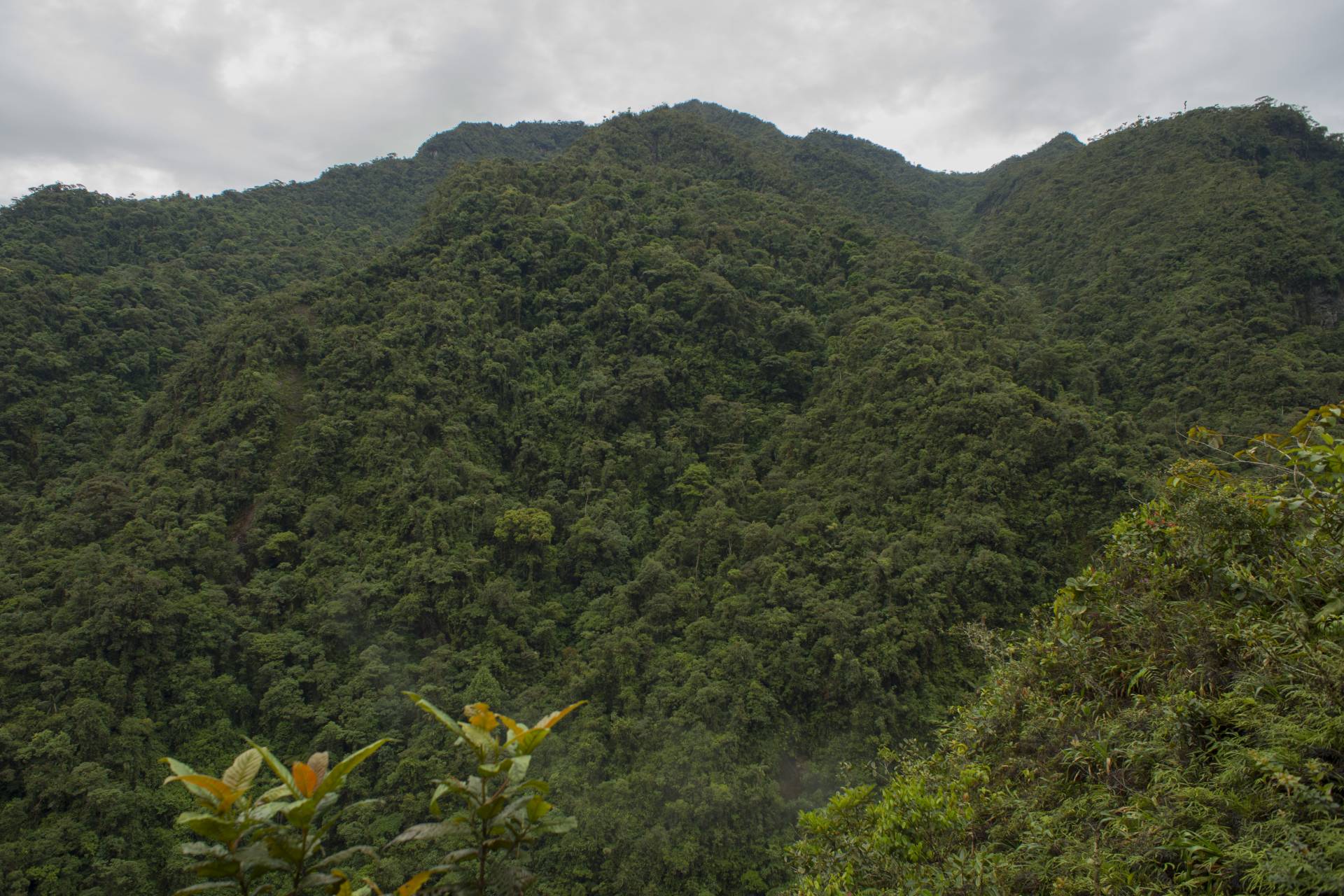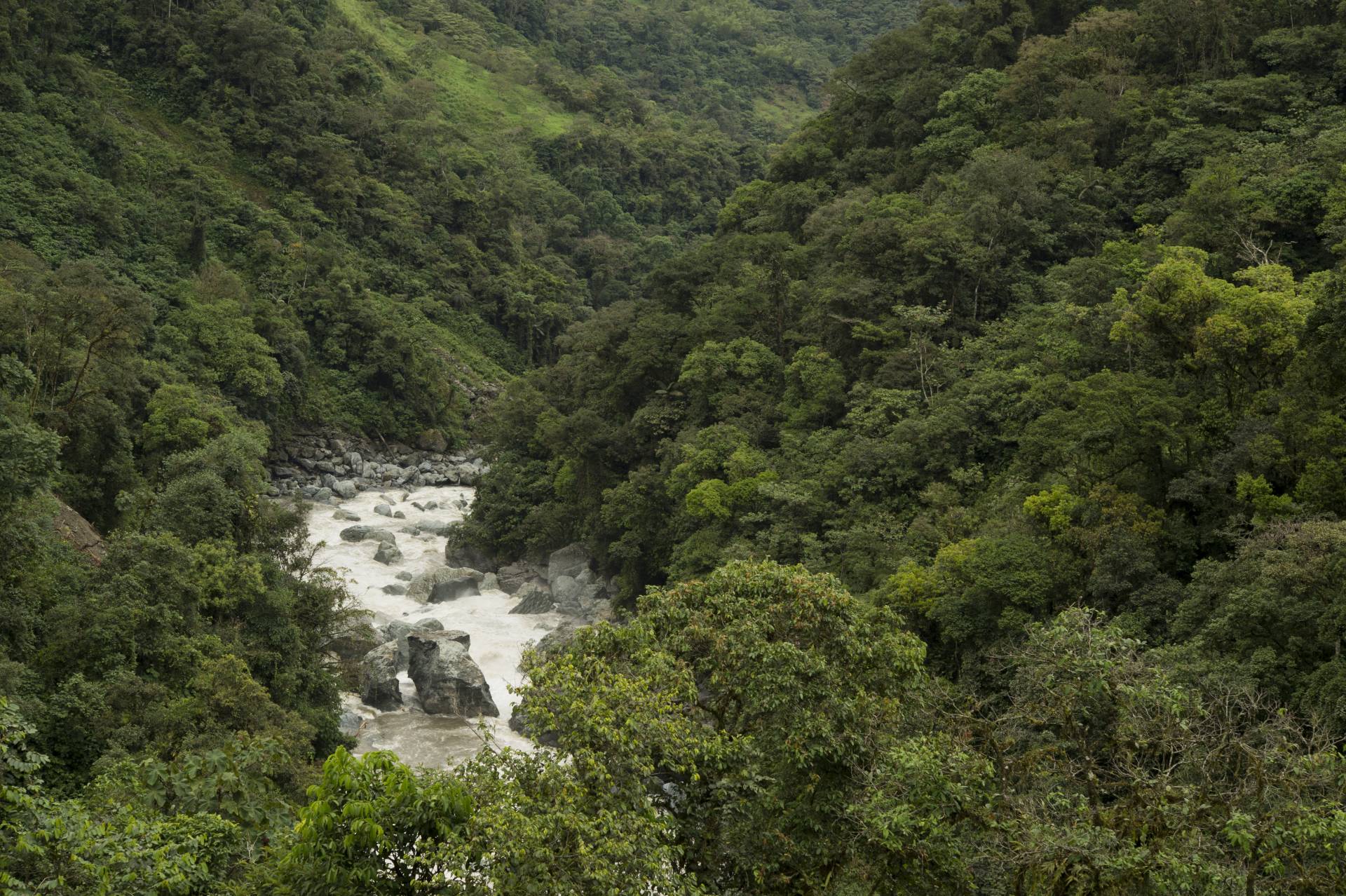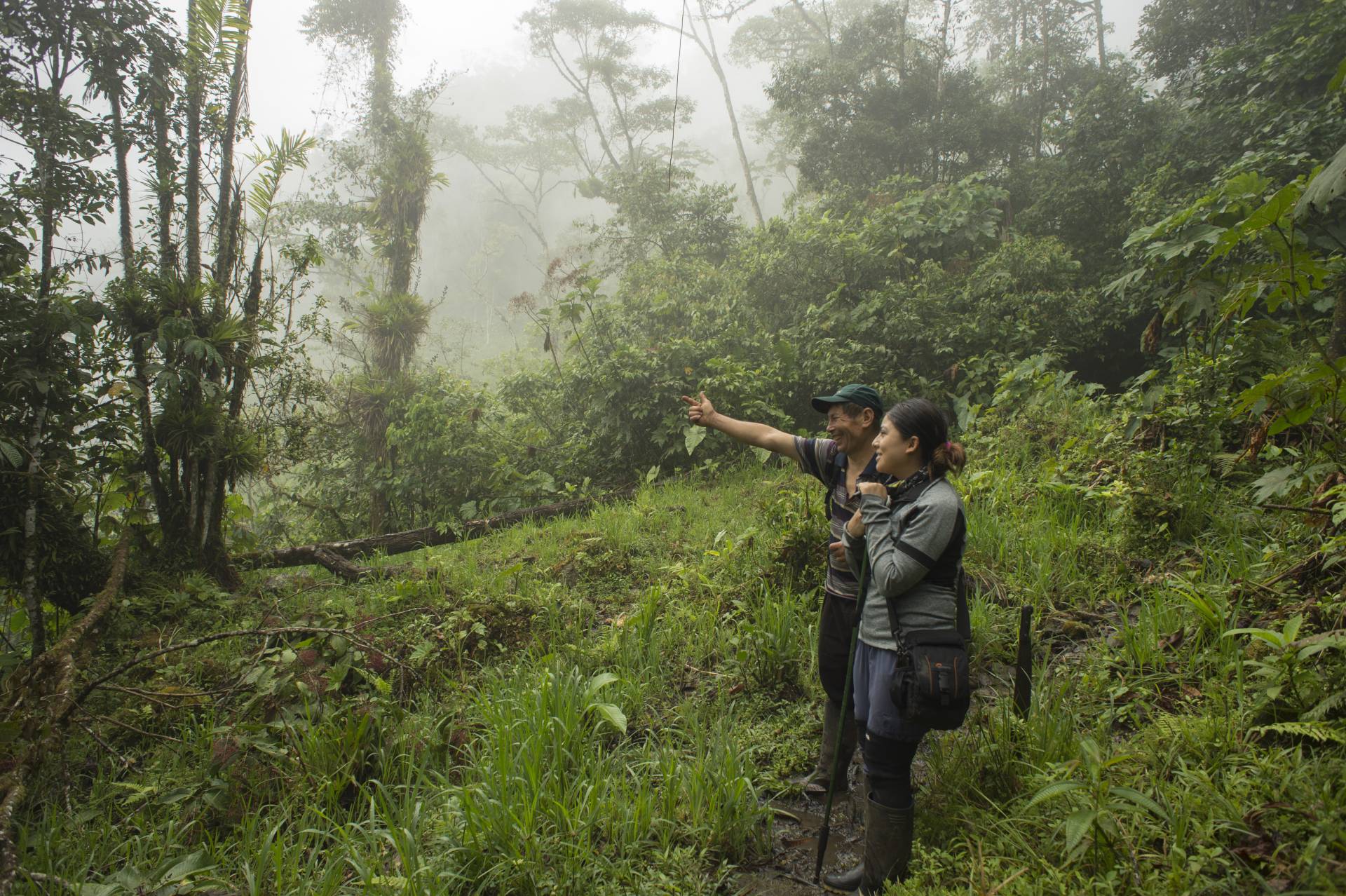Protecting intact habitat in the Tropical Andes
03/10/2021
A new conservation area protects one of the most biodiverse places on the planet.

Santiago encompasses 34,051 acres of montane forests and paramo grasslands within the Tropical Andes, one of the most biodiverse places on our planet. This global hotspot is known for its extensive flora and fauna and unmatched levels of endemism (species found nowhere else on Earth). Wildlife found in Santiago includes 47 species of mammals, 152 species of birds, 57 amphibian species, 344 plant species, and 11 species of reptiles. The area is home to endangered animals, such as the black-and-chestnut eagle (Spizaetus isidori) and mountain tapir (Tapirus pinchaque), and unique species, including 30 endemic amphibian species and 22 endemic plant species.
Adjacent to Rio Negro-Sopladora National Park, Santiago establishes habitat connectivity essential for far-ranging animals like the jaguar (Panthera onca) and the spectacled bear (Tremarctos ornatus). Additionally, it enhances the protection of critical resources in the region, including water sources. The new area contains water sources for hydropower plants and for more than 15,000 people living in nearby cities and communities.

Fortunately, most of Santiago’s natural habitat has remained intact due to the steep topography of mountains in the area and the region’s low population density. However, cattle ranching is continuously transforming forest in the region into pasture lands. Growing international demand for wood from the balsa tree (Ochroma pyramidale) also threatens the region’s habitat, as it motivates local people to cut down the tree.
Forest loss due to agricultural expansion and logging results in millions of tons of carbon being released into the atmosphere. Santiago stores around 5 million tons of carbon, contributing to the mitigation of climate change.

In partnership with the local municipality, the FONAP water fund, and Ecuador’s Ministry of Environment and Water, Nature and Culture has worked on the creation of Santiago since 2017, preparing maps, technical studies, and legal documents. This work was possible thanks to generous donors like you and the financial support of World Land Trust, Moxie Foundation, Bobolink Foundation, Andes Amazon Fund, and Natura International.
With your help, Nature and Culture’s team in Ecuador will continue to work with local governments to ensure effective and lasting conservation impact in the Ecuadorian Andes.
Thank you for making this achievement possible! We hope that this bit of good news inspires you to continue fighting for nature and culture.
Did you hear about the first Water Protection Area in southern Ecuador? Learn more here.


